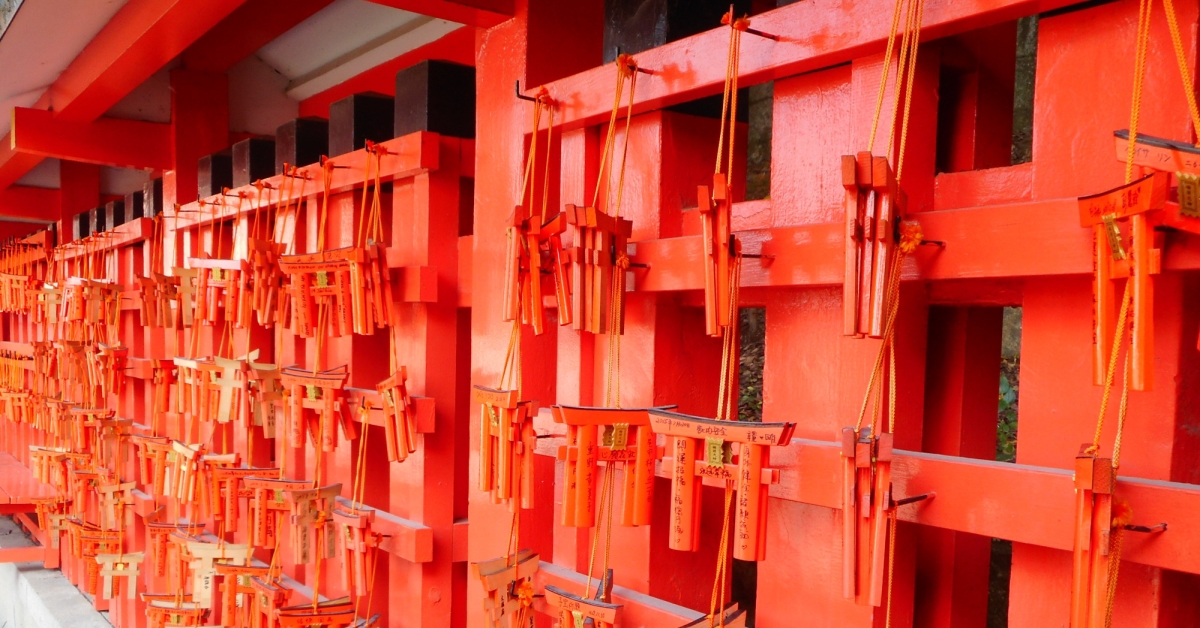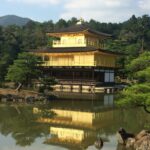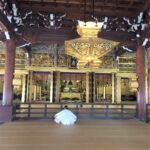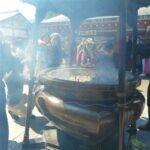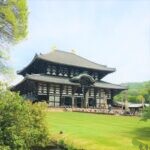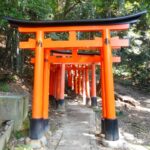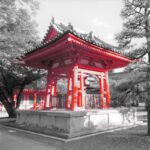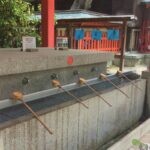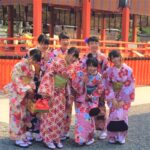When you travel around Japan, the abundance of temples and shrines can be quite overwhelming. Subsequently, it can be difficult to tell apart the Shinto shrines and Buddhist temples, if you don't know what to look for. I have traveled through Japan a few times and made this concise guide, to help you distinguish between Japanese Shinto and Buddhism places of worship. So you know which rules to adhere to when you visit them.
Origins of Japanese Shinto and Buddhism
In Japan, there are two dominant religious movements: Shinto and Buddhism. However, Japanese people are usually not exclusively part of one or the other. They often practice a combination of both religions.
Buddhism originated about 2500 years ago in ancient India. A Hindu prince named Siddharta Guatama could no longer cope with the suffering he witnessed around him and decided to spend his life to try and reach enlightenment. His teachings spread through large parts of Asia. Soon, the Mahayana branch of Buddhism spread to China. From there it spread to Japan, where it was adopted as Zen Buddhism. In short, the goal of Buddhism is to reach enlightenment and end human suffering.
The origin of Shinto (kami-no-michi) is not as clearly documented. Most likely, it originated in Japan and is based on a public belief system that everything around us possesses its own individual spirit. These spirits are worshiped at kamidana household shrines, family shrines, and public shrines. Shinto is not an organized religion like Buddhism. The Shinto belief is quite popular among the Japanese.
Examples of Buddhist Temples
Differences in building styles
Shinto shrines (jinja) and Buddhist temples (tera) are often found together in the same places of worship. A clear indication that Shinto and Buddhism can easily work together.
Jinja normally have a large vermilion (I would call that orange) gate (torii). Large dogs or other animals often guard the torii. Shinto shrines also have a chuzobachi, or water bowl, at the front. Here you can clean your hands and mouth before you enter the shrine. Purity and cleansing practices, including ritual washing or bathing, are a major part of Shinto.1
In comparison, Buddhist temples are not so brightly colored on the outside. They are commonly painted brown or black. However, inside, these temples sparkle and shine from all the golden statues dedicated to the Buddha. For purification purposes, incense burns at the feet of statues.
Examples of Shinto Shrines
Difference in practices and rules
You can also tell the difference between a Shinto shrine and a Buddhist temple if you look at the practices and rules. At Shinto shrines, there is usually a lot of noise. For instance, ringing bells and hands clapping to rouse the gods. A proper visit to a shrine means you have to follow shrine etiquette. For instance, before entering a Shinto shrine you need to pay your respects and you need to clean your hands and mouth at a chozubachi (water bowl).
Buddhist temples are mostly shrouded in silence. Prayer and meditation happen in silence. Sometimes you will hear monks chanting mantras. It is important to remove your shoes before you enter a Buddhist temple. Also, if you sit down to meditate, never point your feet in the direction of the Buddha, but tuck them under or behind you, facing away. You can burn incense as food for the Buddha.
In both shrines and temples, it is customary to make a small monetary offering.
Resources
- You can learn more about Shinto on this Jinja Honcho website.
- An extremely helpful guide to learn everything about Buddhist religion and practices is Buddhism for Dummies.
- Read more about vegan travel in Japan in Japan: The land land fo the rising sun (and fish)


